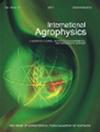土地利用模式在城市绿地土壤有机碳空间预测中的应用
IF 1.7
4区 农林科学
Q2 AGRONOMY
引用次数: 0
摘要
。准确预测土壤有机碳分布是气候变化背景下城市绿地土壤管理的重要课题。采用克里格结合土地利用、普通克里格法、逆距离加权法和径向基函数等4种地统计学方法,预测雄安新区土壤有机碳含量和土壤有机碳密度的空间分布格局,估算有机碳储量,评价土地利用类型对土壤有机碳储量空间预测的作用。结果表明:土壤有机碳含量随土壤深度的增加而降低,且受不同土地利用方式的影响显著(p<0.05);克里格与土地利用的相关系数平均比其他方法高0.229。kriging与土地利用组合的均方根误差和平均绝对误差分别比其他方法低0.148和0.139。Kriging结合土地利用方法在预测土壤有机碳含量的空间分布、土壤有机碳密度的空间分布和土壤有机碳的空间分布方面具有较大的优势,4种插值方法的预测结果相似。土壤有机碳平均密度为2085 Gg (0 ~ 30 cm)和1363 Gg (30 ~ 60 cm)。综上所述,土地利用类型对城市土壤有机碳的空间分布有明显的影响,利用土地利用类型作为辅助数据,可以获得更准确的土壤有机碳空间分布,预测土壤总储量。该研究对城市土壤有机碳的空间预测具有重要意义。本文章由计算机程序翻译,如有差异,请以英文原文为准。
Application of land use modes in the spatial prediction of soil organic carbon in urban green spaces
. The challenge of predicting soil organic carbon distribution accurately has received great attention in order to support urban green space soil management during climate change. This study compared four geostatistical methods: kriging combined with land use, ordinary kriging, inverse distance weighting and radial basis function, to predict the spatial distribution patterns of soil organic carbon content and soil organic carbon density in the Xiong'an New Area, estimate organic carbon stocks, and assess the role of land use types in the spatial prediction of soil organic carbon stocks. The results showed that the soil organic carbon content decreased with increasing soil depth, and was significantly affected by different land use types (p<0.05). The correlation coefficient values of kriging combined with land use were on average 0.229 higher than those of other methods. The root mean squared error and the mean absolute error of kriging combined with land use were on average 0.148 and 0.139 lower than those of the other methods. Kriging combined with land use has a greater advantage over other methods in predicting the spatial distribution of soil organic carbon content, and also the spatial distribution of soil organic carbon density and the spatial distribution of soil organic carbon, the prediction results of the four interpolation methods were similar. The average soil organic carbon density was 2085 Gg (0-30 cm) and 1363 Gg (30-60 cm). In conclusion, land use type clearly influences the spatial distribution of soil organic carbon in urban areas, and by using land use type as auxiliary data, we can obtain a more accurate spatial distribution of soil organic carbon and predict the total storage capacity of the soil. This study may result in significant advances in the spatial prediction of soil organic carbon for urban areas.
求助全文
通过发布文献求助,成功后即可免费获取论文全文。
去求助
来源期刊

International Agrophysics
农林科学-农艺学
CiteScore
3.60
自引率
9.10%
发文量
27
审稿时长
3 months
期刊介绍:
The journal is focused on the soil-plant-atmosphere system. The journal publishes original research and review papers on any subject regarding soil, plant and atmosphere and the interface in between. Manuscripts on postharvest processing and quality of crops are also welcomed.
Particularly the journal is focused on the following areas:
implications of agricultural land use, soil management and climate change on production of biomass and renewable energy, soil structure, cycling of carbon, water, heat and nutrients, biota, greenhouse gases and environment,
soil-plant-atmosphere continuum and ways of its regulation to increase efficiency of water, energy and chemicals in agriculture,
postharvest management and processing of agricultural and horticultural products in relation to food quality and safety,
mathematical modeling of physical processes affecting environment quality, plant production and postharvest processing,
advances in sensors and communication devices to measure and collect information about physical conditions in agricultural and natural environments.
Papers accepted in the International Agrophysics should reveal substantial novelty and include thoughtful physical, biological and chemical interpretation and accurate description of the methods used.
All manuscripts are initially checked on topic suitability and linguistic quality.
 求助内容:
求助内容: 应助结果提醒方式:
应助结果提醒方式:


